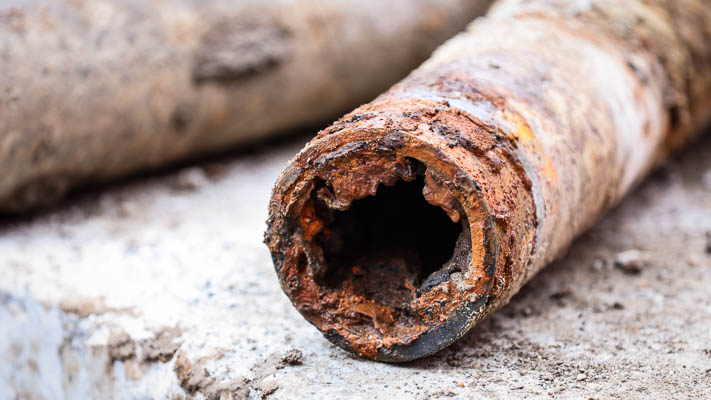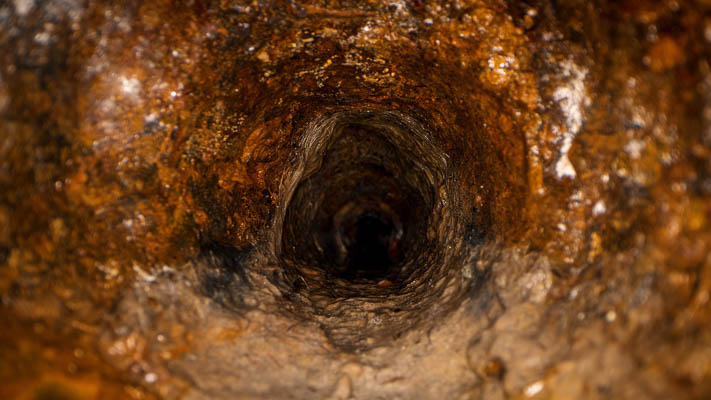What Is the Difference Between Pipe Coating and Relining?
Pipe coating and pipe relining are two methods used to repair and extend the life of aging or damaged pipes, but they differ in their approach and application.
Pipe coating involves applying a protective layer on the inside or outside of the existing pipe, which can prevent corrosion, leaks, and further deterioration. This coating acts as a barrier and is typically made from materials such as epoxy, polyurethane, or polyethylene. The process involves cleaning the pipe's surface to remove any debris, rust, or old coatings, and then applying the new coating using methods like spraying, brushing, or rolling.
Alternatively, pipe relining involves inserting a new, flexible liner inside the existing pipe. This liner is usually made from a resin-saturated material, which is inflated and cured in place to form a new, durable pipe within the old one. We have an article that breaks down what pipe relining is.
The key difference between these two methods is the level of repair they provide. Coating primarily protects the existing pipe, while relining essentially creates a new pipe within the old one, offering a more comprehensive solution for severe damage or structural integrity issues.
Both methods are non-invasive and can be done without digging up the old pipe, making them popular choices for outbound pipe repair. The main decision between them depends on the extent of damage to the pipe.
However, if your home is experiencing systemic plumbing issues that are often associated with inbound pipes, then the only option is to replace your damaged pipes which we will discuss later in this article.
What Are Inbound and Outbound Pipes?
It is important to differentiate between inbound and outbound pipes. The main difference lies in their function within a plumbing system:
- Inbound Pipes: These carry fresh water into a building or home from the main water supply. They deliver clean water for drinking, bathing, cooking, and other uses. These pipes must be made from materials that ensure the water remains uncontaminated, like copper or PEX.
- Outbound Pipes: These are used for removing waste water from the building. They carry greywater (from sinks, showers, etc.) and blackwater (from toilets) out to the sewer system or a septic tank. Outbound pipes are often made from materials like PVC or ABS.
What Are the Pros and Cons of Pipe Coating?
The Pros of Pipe Coating
One of the biggest advantages of pipe coating is its cost-effectiveness, as it generally requires less material and labor compared to relining. Coating is particularly useful for addressing minor to moderate corrosion and can be applied to various pipe materials, including metal and concrete.
The process is relatively quick, with minimal disruption to the surrounding environment since it doesn't require digging or removing the pipe. Additionally, it provides a smooth, even surface that can improve water flow and prevent future buildup of debris or scale.
Pipe coating is commonly used in industries such as water supply, oil and gas, and sewage, as it is an effective solution for preserving the structural integrity of pipes without the need for more invasive and costly replacements.
The Cons of Pipe Coating
Pipe coating comes with several disadvantages, especially when it comes to fixing fresh water plumbing issues in the home. This is particularly important if your pipes are suffering from significant structural damage or extensive cracks.
Since coating primarily adds a protective layer rather than reinforcing the pipe, it is not sufficient for pipes that are severely corroded, such as outdated galvanized plumbing.

Coating may not fully address underlying systemic issues that have developed over time. These include galvanized pipes, mineral buildup, and low water pressure. We have an article that details the causes of systemic plumbing issues and why they require full home repipes.
Furthermore, the longevity of the coating depends on the condition of the original pipe alongside the quality of the application. Because of this, it may require multiple reapplications over time, which can significantly increase the overall cost.
What Are the Pros and Cons of Pipe Relining?
The Pros of Pipe Relining
Pipe relining offers a stronger all-around solution compared to pipe coating for pipes that are structurally compromised.
Relining essentially creates a new pipe within the old one, providing a durable, seamless barrier that can withstand significant wear and tear. This makes it an ideal choice for pipes with large cracks, holes, or severe corrosion.
Relining is versatile and can be used on a variety of piping materials. It's effective at addressing plumbing issues like root intrusion, as it seals off any openings where roots could enter.
Additionally, the new liner is often more resistant to corrosion and abrasion, significantly extending the lifespan of the pipe.
The Cons of Pipe Relining
Despite its many advantages, pipe relining comes with its own set of drawbacks. It is generally more expensive than coating due to the materials and the complexity of the installation process.
The curing time for the resin can also be longer, which may result in more downtime compared to coating. Relining can slightly reduce the internal diameter of the pipe, which might be a concern in systems where maintaining maximum flow capacity is critical.
Not all pipe materials can be effectively relined. For example, PVC's (polyvinyl chloride) smooth internal surface makes it hard for epoxy lining to adhere to it.
While relining can fix many issues, it won't fix the failure of outdated materials such as polybutylene and galvanized pipes, as the liner relies on the original pipe structure to maintain its shape. In these cases, the only permanent solution is to fully replace your home's plumbing.
For more information on pipe relining, check out our article on why replacing your drain and sewer pipes is a more permanent solution than relining.
Get your free estimate today
With over 75,000 repipes completed, we've perfected our One-Stop Repipe™ for your home.
Should I Coat, Reline or Replace My Damaged Pipes?
While pipe coating and relining are effective for extending the life of plumbing, especially for outbound waste pipes, they are ultimately temporary solutions. For more permanent results—particularly when plumbing systems are failing or inbound fresh water pipes are damaged—replacement is the most reliable option.
When it comes to inbound fresh water lines, a repipe is often necessary for homes experiencing slab leaks, or outdated materials like Kitec, galvanized pipes, and polybutylene. These materials can lead to ongoing problems if they are only patched up with coating or relining. Repiping with modern materials like PEX tubing or copper pipes ensures a long-lasting solution and eliminates the need for repeated repairs.

At Repipe Specialists, our full home repipes make the plumbing replacement process more straightforward than ever. By threading new pipes through the central manifold, we can replace your home's plumbing quickly and professionally within just 1 to 2 days using our One-Stop Repipe™ Process. This not only minimizes disruption to your home but also reduces the long-term costs associated with recurring relining and coating procedures.
While the initial investment in a full home repipe might seem high, it is almost always a more economical choice in the long run, providing you with the peace of mind that your plumbing system is built to last.
Get a Quote for Your Full Home Repipe
Here at Repipe Specialists, we've fully replaced the plumbing in over 75,000 homes since 1991 using both copper piping and PEX tubing. We continually get positive customer feedback from customers about their overall home repipe experiences. We often exceed their expectations on:
- Speed: Our repipe crews typically complete a repipe in a day, returning on another day for wall patching.
- Convenience: Through our One-Stop Repipe™ Process, we handle everything from permits, to wall patching, to inspections.
- Cleanliness: Our crews are trained to protect your home while working (we cover all surfaces with protective sheeting), and to clean up fully at the end of each day.
- Peace of Mind: Repipe Specialists is a fully licensed plumber in every state we operate in, and we back all of our repipes with a lifetime warranty.
- Financing programs: To help take the sting out of unplanned repipe expenses, we offer several financing programs.
- Price: As a specialist that performs hundreds of repipes a week, we can deliver high-quality repipes at a lower cost vs generalist plumbers. We have an article that covers repipe cost factors in detail. Our quotes typically range from $4,500 to $15,000 depending on the size and complexity of your project.
Schedule a free in-home consult, and one of our local repipe consultants will explain all your repipe options and provide you with a written, fixed-price quote. Permanently fix plumbing issues, repipe now.

